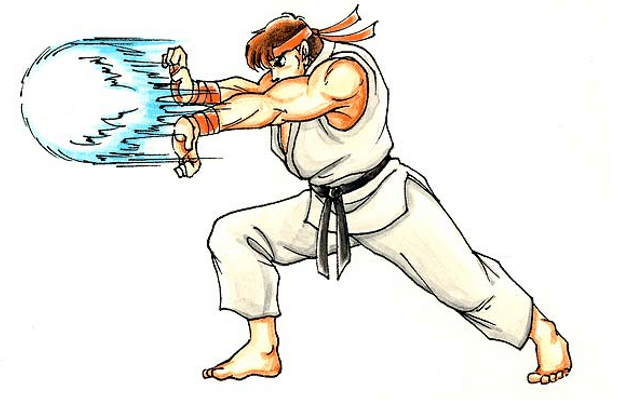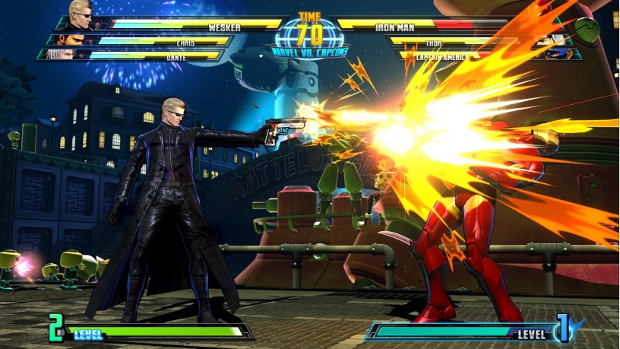This post has not been edited by the GamesBeat staff. Opinions by GamesBeat community writers do not necessarily reflect those of the staff.

Whether you play King of Fighters, Street Fighter IV, Blazblue, or Marvel, performing combos has always been an important part of the game. Combos usually felt familiar no matter what game you played, but Skullgirls has put a spin on the combo system that feels brand new and foreign. There are no new terms of mechanics. Everything is just renamed to fit Skullgirls’ theme such as blockbusters (supers) and dramatic tension (meter). And yet executing combos feel new, even after getting familiar with your chosen character. There are new rules and mechanics in place that make it different from Marvel 3 or Street Fighter IV.
First, let’s familiarize you with how combos work in other fighting games.
If you’ve played Street Fighter, you’re familiar with its combo system. The limitations of a combo in SFIV are factors such as hitstun, juggle state, and knockback. Simply put, all attacks, no matter how they’re applied, have hitstun. So long as the attack following it is fast enough to hit while your opponent is stunned from hitstun, it will combo. The end of a combo is usually when the opponent falls down or if the invisible juggle counter reaches a certain limit. This system limits the number of times you can hit a helplessly airborne opponent and once they hit the ground, they’re free to spend those precious few seconds to plan out what they want to do on wake up.
Many new-school fighting games also function like a game you might’ve played, Marvel Vs. Capcom 3. Because of the extravagant range and speed of most attacks, hitstun deterioration is in place to put a hard limit on most combos. This system reduces the amount of hitstun attacks have the higher the combo and the longer it’s gone on. It attempts to stop infinites which may happen in SFIV’s system, though infinites are still possible in a wide array of moves in the game’s repertoire. Combos can also be extended in a multitude of ways like wall bounce, ground bounce, and OTG attacks (off the ground).

So what makes Skullgirls different? It uses the hitstun system similar to SFIV, so all attacks retain their hitstun regardless of the length of the combo. Skullgirls also lets you OTG and bounce characters around.
The difference that makes Skullgirls feel different is the Infinite Detection System. The IDS is capable of sensing what you’re performing certain attacks in a repetitive loop and instantly makes those attacks worthless as well as giving the opponent the ability to burst out; a term you might otherwise know as a combo breaker.
Especially in games like Marvel and Blazblue, many people are conditioned to repeat loops. With hitstun deterioration, combos which involve loops can only be repeated so many times before the hitstun is so small, opponents can recover and flip out. However, the IDS in particular seems especially strict, not even allowing a you to repeat a specific string of attacks once.
If you've seen combo videos of Skullgirls, you may have noticed that this encourages using more normals in varying patterns. Notice how there are even 100% combos being figured out by combo makers? Each little rep of the combo has small variations in it to keep the IDS from popping up.
Another thing fresh about Skullgirls' combo system is the emphasis on special properties on normal moves. If you're coming fresh off of Marvel 3, you're probably used to using a special move in order to OTG, wall bounce, etcetera. Even Wesker's infamous Samurai Edge Lower is technically a command normal. But the normals in Skullgirls all have varying properties which makes the application of specials less essential for combo extending. The crouching moves of most characters in fact, can OTG. Like the ground and wall bouncing walls from Marvel though, you're only allowed one true OTG move per combo, which adds more rules to work with in creating useful combos.

I'd be remiss if I didn't mention one of the more obvious aspects that Skullgirls brings us in order to modernize how our fighting games work. Many old school fighters use a six button attack scheme and restrict most combos to links and cancels. On the other hand, many new school fighters use around four attack buttons and make use of chains. Both are seemingly different and yet Skullgirls melds both into one system. The game has six buttons of increasing strength for punches and kicks but they can chained together for simple combos. So there is a greater variety of attacks and combos without the barrier of entry links have.
For the longest time, the old and new school ways of fighting have been at odds as separate styles of combat. But despite being from a small time developer, Revenge Labs along with Mike Z's direction have created a new fighting game that should be tried due to the fresh new ideas it brings to the time old fighting genre.

